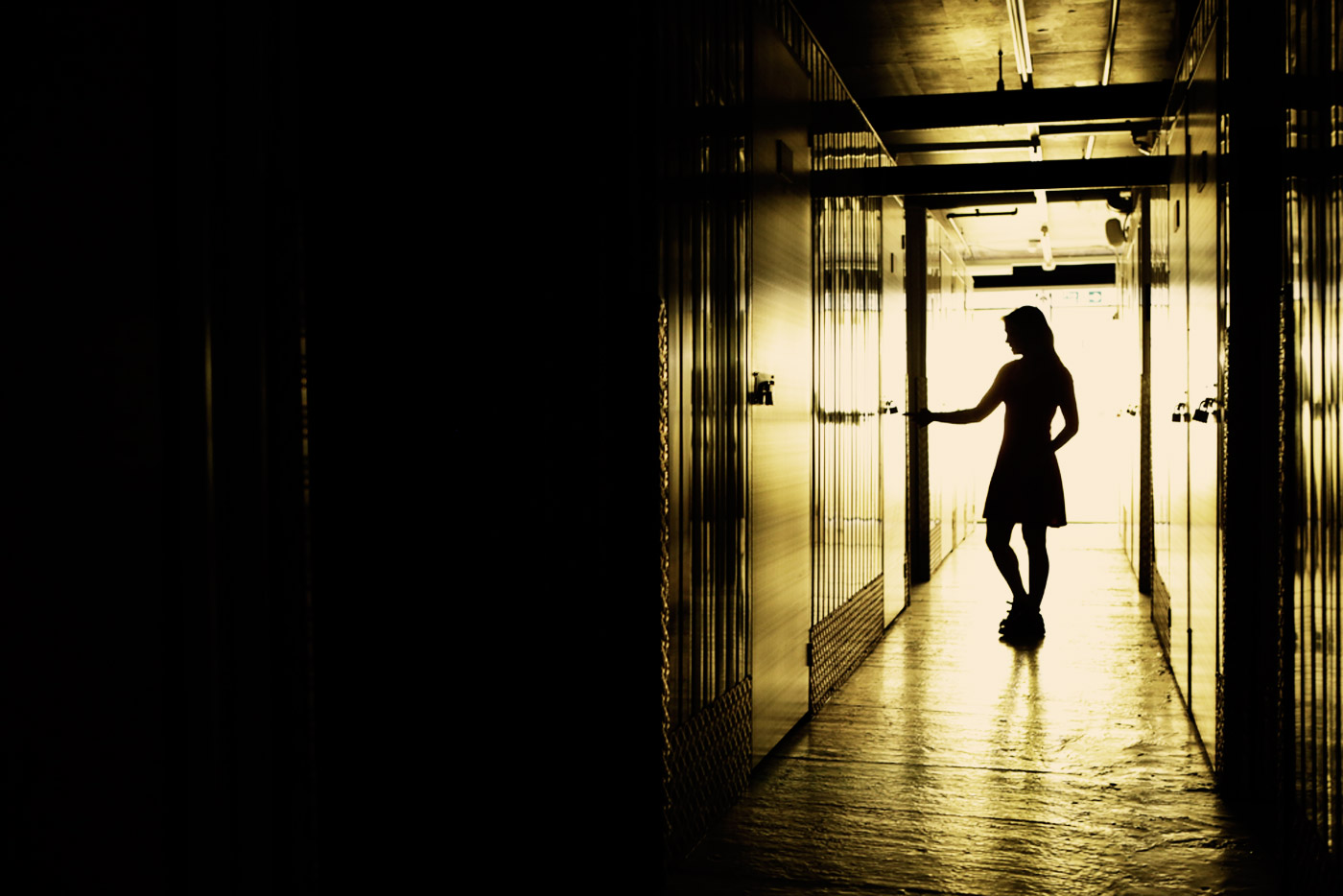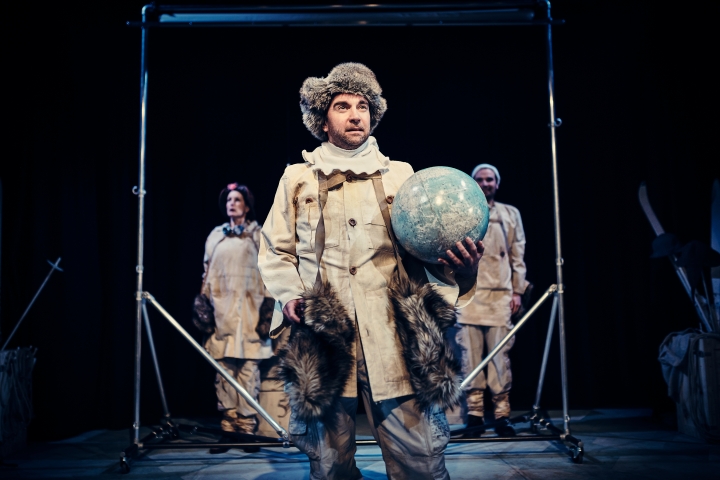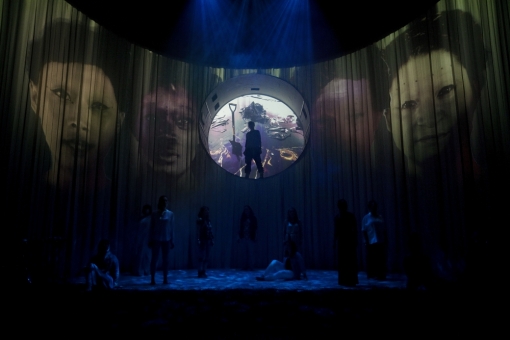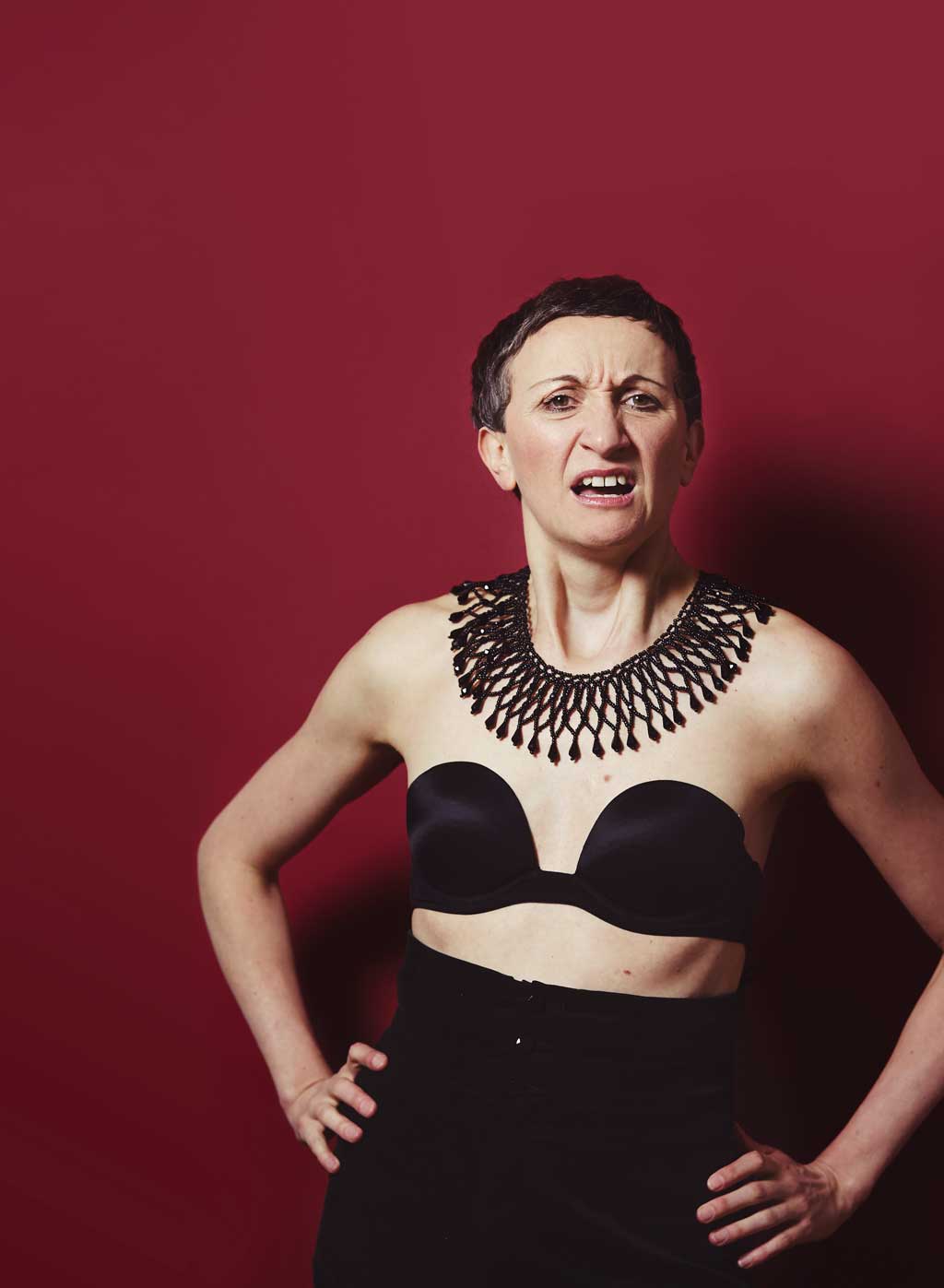Dante or Die are a company whose modus operandi often leads them to craft work by responding to specific sites and the potential stories locked within them. Past shows have included I Do, in which a series of hotel bedrooms served as a location to explore the build up to a wedding. Handle with Care, their latest work, continues this approach by unpicking one of those hidden sites/features of contemporary life, the self-storage facility. In the era of austerity this premise brings into sharp focus the value that we place (or not) on the objects we collect through life. The company work to do this using the neat narrative device of hiding a different scene behind each locker door, revealed one by one as we are escorted through the building.
At the heart of this narrative is an episodic flight through the life of one woman, Zoe (played by two actors: Amy Dolan as the younger Zoe and Rachael Spence as the mature Zoe) – from a fond farewell to a younger brother as he sets off travelling to 30 years later when, faced with her own teenage daughter, she once again has to ‘let go’. The audience are led from locker to locker, dashing down cold and uniformly concrete corridors. Characters we know, or are yet to meet, whizz by or are seen in the distance – associating the maze-like quality of the storage building with that similar quality to the instinctive choices we make in life. In counterpoint to the darting world of Zoe, Terry O’Donovan as The Worker (from the storage unit) is a sedate and detached (but never cold) figure.
Strewn in corners, or propped up against the lockers, are different objects. Divorced from their original context, they seem to lie in a kind of suspended animation, waiting for their owner’s return. This attention to the use of objects is a central detail of the work, and certain key objects appear, disappear and then re-appear (a wooly toy elephant, a painting, the absent brother’s shirt). Sometimes these objects are important, at others they are quickly passed over, further underlying the contextual nature of their importance.
This crafting and framing of the objects is repeated in the ways in which each locker is dressed. This works best when the company either embraces a realistic simplicity (a character, their thoughts and their teddy bear) or when the locker is transformed into another time and place. This occurs most notably when one large walk-in locker becomes both a 1990s rave and a strange embodiment of maternity. With baby clothes suspended from the roof four giant rabbits dance with Zoe, a kind of trippy, slow-motion dance, as she morphs from young to mature. These kind of moments are richest, in that they skilfully blend narrative with a nuanced and detailed sense of the emotional and visceral transitions we make as we grow older – here, from the heady escapism of youth to the complex delights of parenthood.
Throughout, Handle with Care is deftly supported by a richly layered soundscore, comprising popular music from 1988 to the present day, the tracks mixed and distorted so that they evoke the spirit of the individual time periods whilst conjuring a kind of bittersweet nostalgia. During the transitions in the corridors they also serve to collide the past and the present, subtly transforming the concrete corridors into liminal spaces. Often the music plays from unpacked sources, a cloth handbag or a shoe box. Often these are carried by the performers – a mark of how we attach memories and importance not only to objects but also to more ephemeral, non-material things (such as music).
Where the production struggles is ensuring the ostensibly psychological narrative world carries as much resonance as the more poetic images and choreographic sequences. The brevity of the scenes and their necessarily compact structure means that the arc of the scenes often feels rather rushed, with the need for the text to deliver exposition getting in the way of the emotional world of the characters – with some lines serving as rather clunky signposts of the themes behind the work. This challenge is handled more successfully by the more mature performers (Spence and Stephen Harry as her husband Simon), who successfully find subtle variations in their physicality to find a journey through the text. However, the younger performs struggle in this regard – they seem to lack the resources (or perhaps are drawing on less compatible techniques) to activate the text in this context. This is a shame as there is a lot of heart and soul in the work they do.
Handle with Care explores the way in which we desperately try to fix the ephemerality of experience in the objects we choose to keep: a loved one’s shirt, a few photographs, a teddy bear, that unwanted present we don’t have the heart to chuck away. This is richly embodied in the best moments of this show, as the performers manage to pin down the emotional intensity of charged and transient moments in the lives of the characters: a surprise discovery of a long-forgotten object, or the moment when you can finally let-go of the ‘thing’ that has served as a reservoir for complexly entwined and unresolved emotions.





